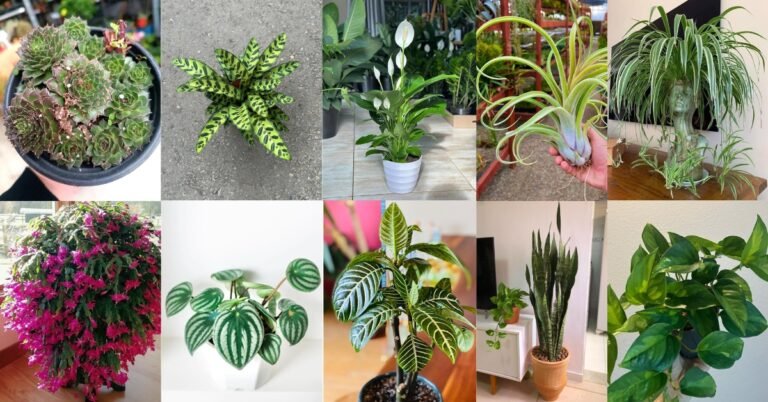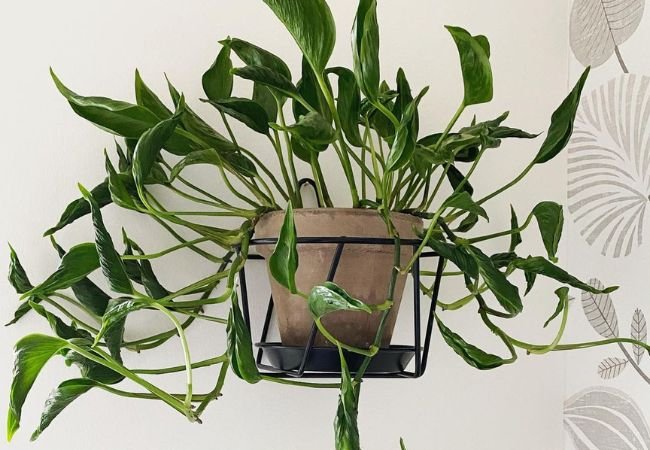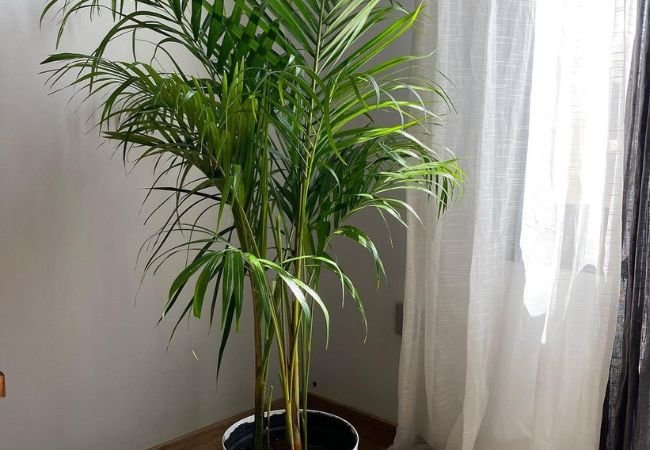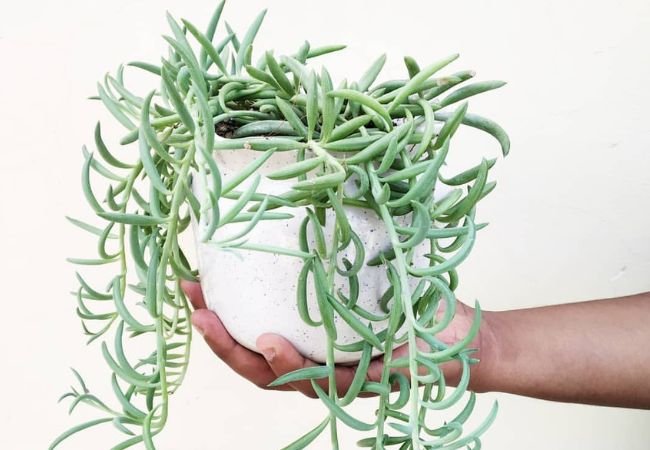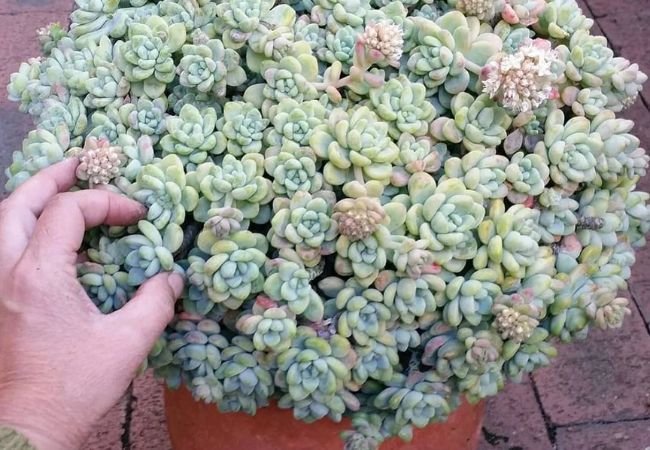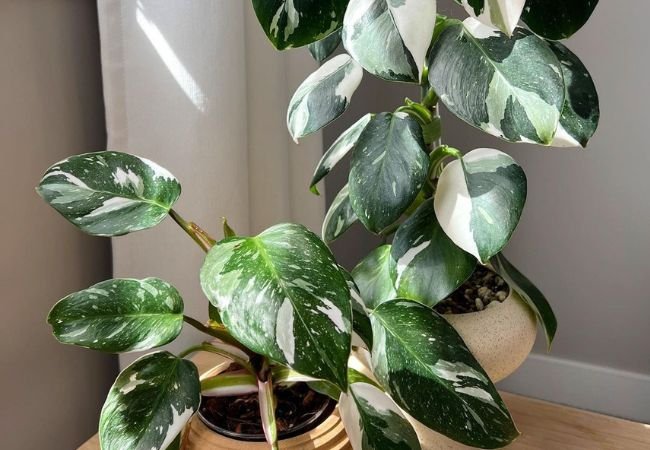Moonlight Plant Care: Expert Tips for Scindapsus Treubii Moonlight
Discover expert tips for caring for your Moonlight Plant, Scindapsus Treubii Moonlight. Learn essential care practices to keep this elegant plant healthy and thriving.
Are you looking for a stunning houseplant that’s easy to care for? Meet the Scindapsus Treubii Moonlight a beautiful tropical vine with unique silver-green leaves. This rare plant is becoming more popular among indoor gardeners and for good reason. Let’s dive into everything you need to know about caring for this gorgeous plant.
Here’s an information chart for the Moonlight Plant:
| Attribute | Details |
|---|---|
| Botanical Name | Philodendron ‘Moonlight’ |
| Common Name | Moonlight Philodendron |
| Plant Family | Araceae |
| Hardiness Zone | USDA zones 9-11 |
| Sun Exposure | Bright, indirect light to partial shade |
| Soil Type | Well-drained, rich, and organic soil |
| Watering | Moderate; keep soil consistently moist but not waterlogged |
| Growth Habit | Clumping, rosette-forming perennial |
| Height/Spread | 1-2 feet tall / 1-2 feet wide |
| Special Features | Bright chartreuse-green foliage, easy to grow, suitable for indoor and outdoor growing, air purifying |
What is Scindapsus Treubii Moonlight?
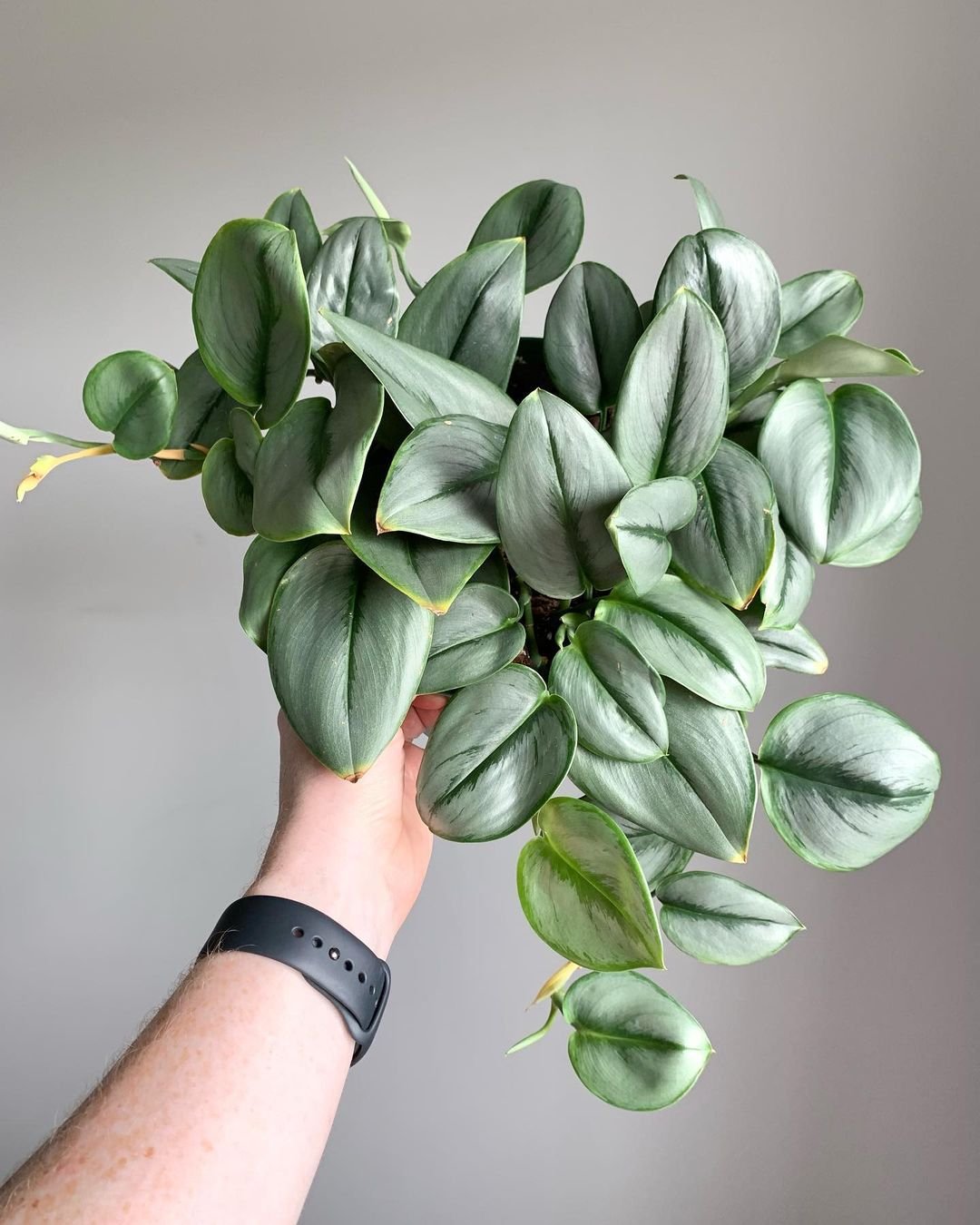
Here’s a short information chart about Scindapsus treubii ‘Moonlight’:
| Characteristic | Description |
|---|---|
| Scientific Name | Scindapsus treubii ‘Moonlight‘ |
| Common Name | Moonlight Scindapsus |
| Family | Araceae |
| Native To | Southeast Asia |
| Description | – Tropical vine known for its striking, heart-shaped leaves. |
| – Leaves are usually glossy and marbled with shades of green and silver, giving a moonlit appearance. | |
| Growth Habit | Climbing vine, can trail or climb with support |
| Light Requirements | Bright, indirect light; avoid direct sunlight |
| Watering Needs | Moderate; allow top inch of soil to dry between waterings |
| Propagation | – Propagate from stem cuttings in water or moist potting mix. |
| Special Features | – Tolerates low light conditions but grows best in brighter light. |
| – Suitable for hanging baskets or trained on a support like a moss pole. | |
| Care Tips | – Provide high humidity; mist leaves regularly. |
| – Use well-draining potting mix; fertilize during growing seasons. | |
| Common Uses | – Popular as a decorative indoor plant or in tropical-themed gardens. |
| – Used in interior landscaping for its attractive foliage. |
Scindapsus Treubii Moonlight, also known as Sterling Silver, is a climbing vine native to Southeast Asia. It’s part of the Araceae family, which includes other popular houseplants like pothos and philodendrons. The Moonlight variety gets its name from its eye-catching leaves. They’re a deep green color with silvery-white variegation that seems to glow in low light.
This plant is often confused with its cousin, the Scindapsus Pictus or Satin Pothos. While they look similar, the Moonlight has larger, more oval-shaped leaves with a unique shimmery quality. It’s a slow grower compared to other vining plants, which makes it perfect for smaller spaces.
Light Requirements
Scindapsus Treubii Moonlight thrives in bright, indirect light. This means it likes lots of light, but not direct sunlight which can burn its leaves. A spot near a north or east-facing window is ideal. If you only have a south or west-facing window, use a sheer curtain to filter the strong light.
Don’t have a bright spot? No worries. This plant can tolerate lower light conditions, but it will grow slower and might lose some of its silver coloring. If your Moonlight’s leaves start looking dull or the variegation fades, it’s a sign it needs more light.
You can also use grow lights to supplement natural light. LED grow lights are energy-efficient and won’t burn the leaves. Place the light about 6-12 inches above the plant and leave it on for 12-14 hours a day.
Watering Needs
When it comes to watering, Scindapsus Treubii Moonlight likes to dry out a bit between waterings. Overwatering is the quickest way to kill this plant, so it’s better to err on the side of underwatering. Here’s a simple watering routine:
- Check the soil moisture with your finger. Stick it about 2 inches deep into the soil.
- If the soil feels dry, it’s time to water.
- Water thoroughly until you see water coming out of the drainage holes.
- Empty the saucer so the plant isn’t sitting in water.
In general, you’ll probably need to water every 7-10 days. But this can vary depending on your home’s humidity, temperature, and light levels. Always check the soil before watering rather than sticking to a strict schedule.
During winter, when growth slows down, you’ll need to water less often. Keep an eye on your plant and adjust as needed.
Soil and Potting
Scindapsus Treubii Moonlight likes well-draining soil. A mix of regular potting soil, perlite and orchid bark works well. This combination provides good aeration and drainage while still retaining some moisture.
You can make your own mix with:
- 2 parts potting soil
- 1 part perlite
- 1 part orchid bark
When potting your Moonlight, choose a container with drainage holes. This plant doesn’t like sitting in water, so good drainage is crucial. A pot that’s about 1-2 inches larger than the root ball is perfect. Don’t go too big, as excess soil can hold too much moisture and lead to root rot.
Repot your Scindapsus Treubii Moonlight every 2-3 years, or when you see roots coming out of the drainage holes. Spring is the best time to repot, as the plant is entering its growing season.
Humidity and Temperature
Like many tropical plants, Scindapsus Treubii Moonlight enjoys high humidity. Aim for humidity levels around 60-70%. If your home is dry, especially in winter, there are a few ways to increase humidity:
- Use a humidifier near your plant.
- Place the pot on a pebble tray filled with water.
- Group plants together to create a mini humid environment.
- Mist the leaves regularly, but not too much as this can lead to fungal problems.
As for temperature, keep your Moonlight between 60-80°F (15-27°C). It can tolerate temperatures as low as 50°F (10°C), but growth will slow down. Avoid placing it near drafty windows or air conditioning vents.
Fertilizing
Scindapsus Treubii Moonlight isn’t a heavy feeder, but it does benefit from regular fertilizing during the growing season (spring and summer). Use a balanced, water-soluble fertilizer diluted to half strength every 4-6 weeks.
Organic options like fish emulsion or worm castings work well too. Just be sure to follow the package instructions, as over-fertilizing can burn the roots.
In fall and winter, when growth slows down, you can stop fertilizing. Resume in spring when you see new growth appearing.
Pruning and Propagation
Pruning isn’t necessary for Scindapsus Treubii Moonlight, but it can help keep the plant bushy and full. If your plant gets leggy or you want to control its size, you can trim it back. Use clean, sharp scissors and cut just above a leaf node.
The good news is that those cuttings can be used to propagate new plants! Here’s how:
- Cut a stem with 2-3 leaves, making sure there’s a node (the bumpy part where leaves grow from).
- Remove the bottom leaf, leaving the node exposed.
- Place the cutting in water, making sure the node is submerged.
- Change the water every few days.
- After 2-3 weeks, you should see roots forming.
- Once the roots are about 2 inches long, you can plant the cutting in soil.
Propagation is a great way to get more plants for free or to share with friends. Plus, it’s a fun project that lets you watch your plant grow from the very beginning.
Common Problems and Solutions
While Scindapsus Treubii Moonlight is generally easy to care for, it can face some issues. Here are some common problems and how to solve them:
- Yellow leaves: Usually a sign of overwatering. Let the soil dry out more between waterings.
- Brown, crispy leaf edges: This could be due to low humidity or underwatering. Increase humidity and check your watering routine.
- Pale, faded leaves: Your plant might need more light. Move it to a brighter spot, but avoid direct sunlight.
- Pests: Scindapsus can sometimes attract mealybugs, spider mites or scale. Treat with neem oil or insecticidal soap.
- Slow growth: This is normal for Scindapsus Treubii Moonlight, especially in low light. Ensure it’s getting enough light and fertilizer during the growing season.
Remember, it’s always better to catch problems early. Regular check-ups on your plant can help you spot and address issues before they become serious.
Decorating with Scindapsus Treubii Moonlight
Scindapsus Treubii Moonlight is not just a plant, it’s a living decor piece. Its silvery-green leaves add a touch of elegance to any room. Here are some ideas for showcasing your Moonlight:
- Hanging baskets: Let those vines trail down for a dramatic effect.
- Moss poles: Train the vines to climb up a moss pole for a more upright look.
- Bookshelves: Place it on a high shelf and let the vines cascade down.
- Terrariums: Its slow growth makes it suitable for larger terrariums.
- Mixed planters: Pair it with other low-light plants for a lush, jungle-like display.
The shimmery leaves of Scindapsus Treubii Moonlight catch and reflect light beautifully, making it a stunning accent in low-light corners. Its compact size also makes it perfect for small spaces like apartments or offices.
Scindapsus Treubii Moonlight is a beautiful, low-maintenance plant that can add a touch of tropical elegance to your home. With the right care – bright indirect light, well-draining soil, and careful watering – it can thrive for years, growing into a stunning specimen.
Remember, every plant is unique and may take some time to adjust to your home. Be patient, observe your plant, and don’t be afraid to adjust your care routine as needed. With a little love and attention, your Scindapsus Treubii Moonlight will reward you with its beautiful, shimmering foliage for years to come.
Whether you’re a seasoned plant parent or just starting your indoor jungle, Scindapsus Treubii Moonlight is a fantastic choice. Its easy-going nature and stunning looks make it a true star in the world of houseplants. Happy growing!

